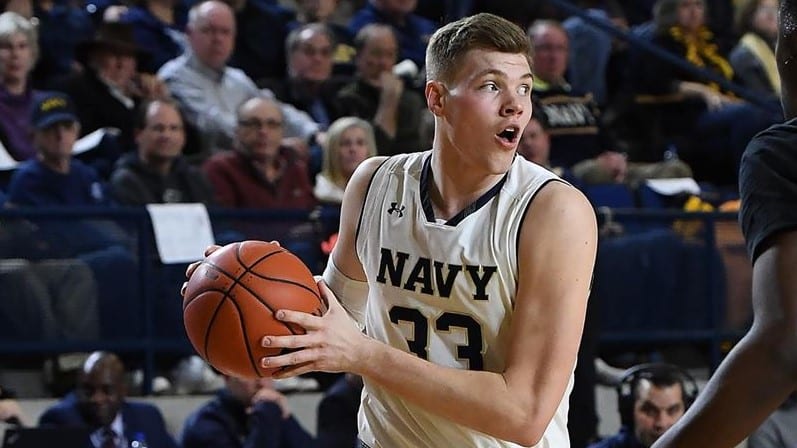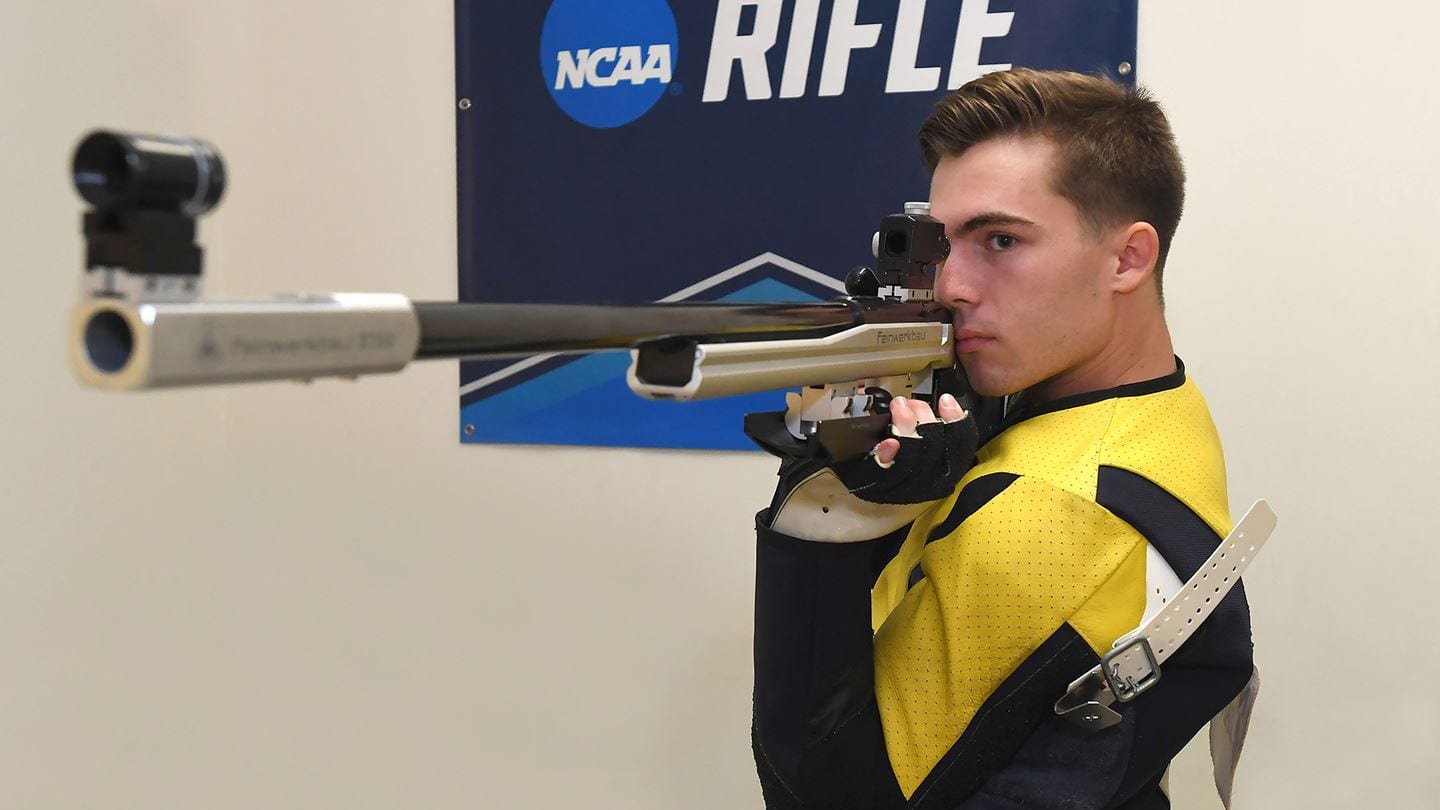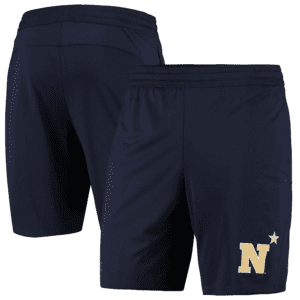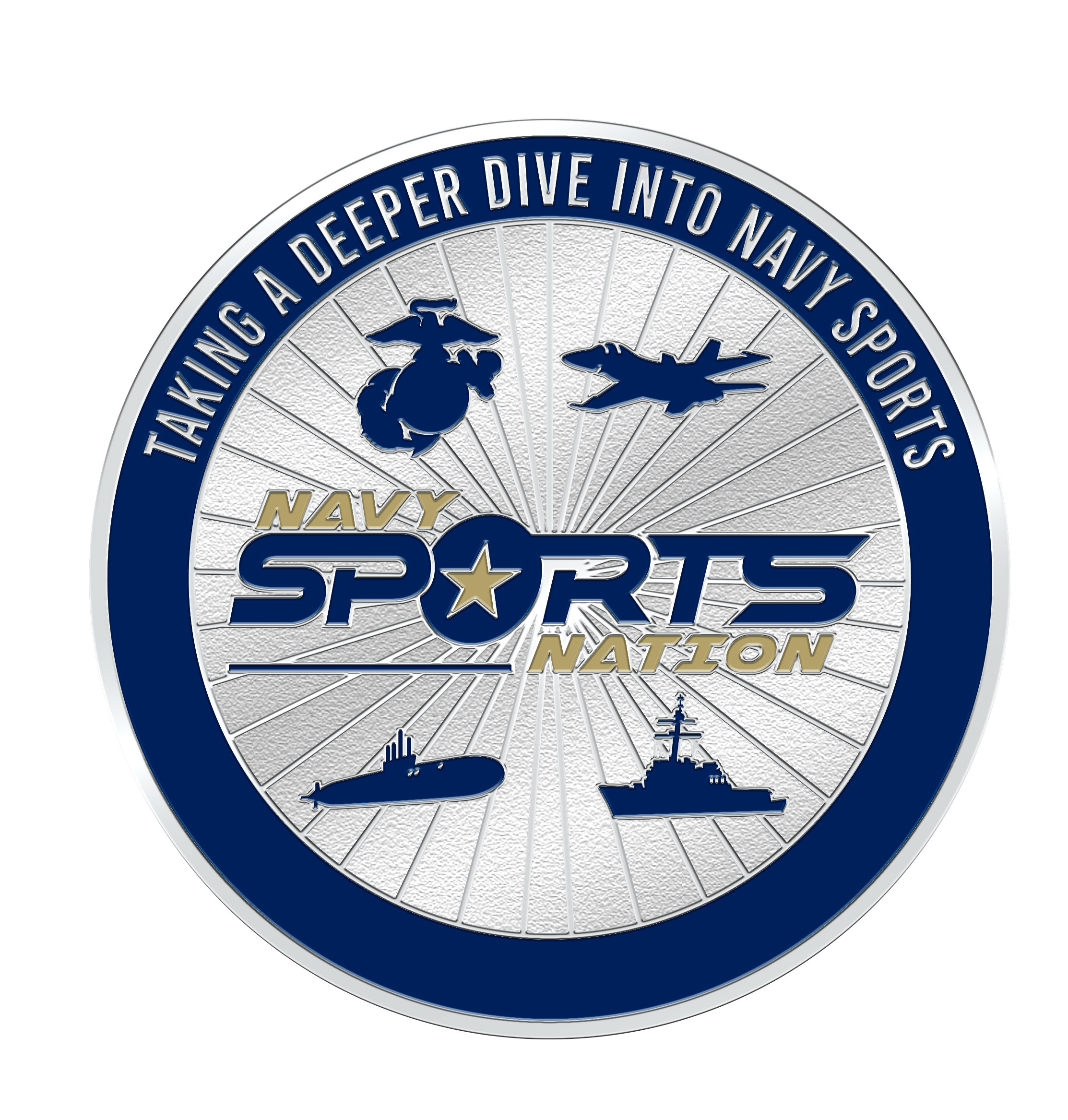On Target: The Making of a Navy Rifle Athlete
Most parents would probably agree that getting their son or daughter involved in a sport early is a good thing. The biggest challenge is finding the right one. Today, we’re going to take a look at one that is on almost no parents’ radar screen: shooting. And while we’re at it, we’ll find out more about what goes into the making of a Navy Rifle athlete.
About nine months ago, I published my first post on the Navy Rifle team. They had just beaten Army for the second straight year. In that feature, I mentioned several top performers, including Mike Zanti, a sophomore at the time.
Mike will be half of the focus of our discussion today because I also wanted to look at things from another angle when telling his story. We’re always hearing about the soccer moms running their kids all over the place while they compete on traveling teams. That goes for basketball and baseball also.
So I wanted to see how that compared with parents who have kids competing in sports you don’t hear about as often. I’d say shooting qualifies.
We’re going to have a chance to do that in this post. It will be in the form of an interview. Not only will we be talking with Mike Zanti, but I also had the pleasure of speaking with his mom and my classmate Kathleen (Murray) Zanti. I thought her perspective would be particularly interesting so we can see how her experience compares to those parents who have kids in more traditional sports. So stick around. I think you’re going to like this.
The Beginning
These interviews were conducted about a week apart. Even though I didn’t ask the exact same questions, I think the piece will flow better of we follow a chronology with both Kathleen and Mike answering the questions based on the time frame. Here goes . . .
NSN: Kathleen, when you started thinking about different sports to get Mike involved with, what was the first one? I’m thinking that shooting didn’t jump out there as an option right away.
KMZ: Initially, it was swimming. We were living in Scottsdale, Arizona at the time. And I wanted to teach all my kids to swim, mostly for safety reasons.
Later, we tried soccer after moving back to Norfolk. But Mike and his older sister Claire both hated it. And to this day they still do.
Later that year, I ran into Linda (Schumacher) Erickson (’84) at a change of command ceremony. We were roommates on our first ship. When I asked about her kids, she mentioned that her son Joe was into shooting.
That’s when I thought, “Shooting . . . you don’t have to be tall to be a shooter.” I was mostly thinking about Claire because she was much smaller than other kids her age. And then it also occurred to me that shooting was co-ed, so I’d only need to drive to one place for both her and Mike.
So that’s how we got into it. Linda Erickson should really get the credit. She pointed me to a junior air pistol program, which is where Claire and Mike got started.
Learning the Ropes
NSN: So Mike, how old were you when your mom first got you started? Did you like it right away or did it kind of grow on you?
MZ: I was about nine years old when I got going in air pistol. At the time, I wasn’t that tall and could barely see over the bench. And I was also in the division where they fired while resting the pistol on a support because I wasn’t quite strong enough to hold it without assistance.
But it was a fun experience from the beginning. I started competing shortly after that. In 2010, I began shooting small bore. And within the next two years, I started shooting air rifle.
Early Success
NSN: Let’s go now to the first competition that you won. I know you were only nine, but did you have any expectations going in? What was it like when you realized you had won the event?
MZ: Yes, that was the National Air Pistol Championships. I was in the youngest age group. I had no concept of what was a good score or what was a bad score. And I didn’t know anyone else there either. I just showed up and shot.
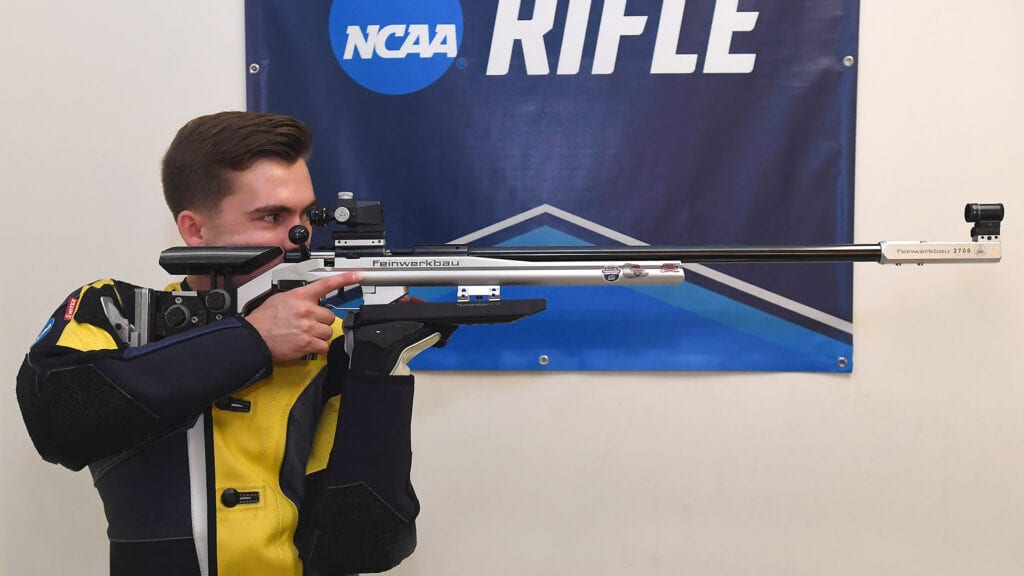
When they called my name at the end, I was pretty surprised. I knew I had done okay in the earlier qualifying matches. But I didn’t have a sense of whether or not it was good enough. I just tried to shoot like I always did in practice.
NSN: Kathleen, describe what you were experiencing at that time. Where does that moment rank in terms of when you were most proud?
KMZ: It still ranks ranks right up there along with this year’s match against NC State. I don’t remember how many competitors were there, but some were from other countries.
Mike was one of the youngest, and it was his second competition overall. So to have him win the championship made me so proud. And that’s when I got the feeling that he may have a real talent for shooting.
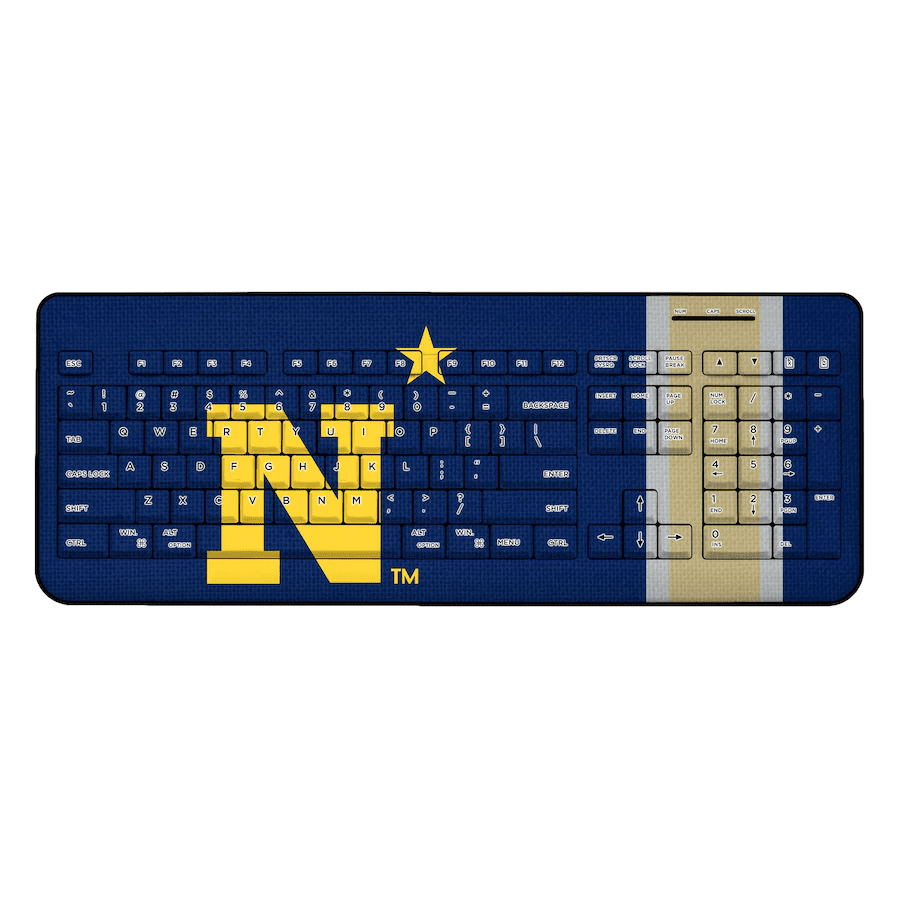
Road Warriors
NSN: So you’ve recognized that Mike may have a future in the sport. And as parents of athletes, we all know what comes next: the time commitment. We often hear about parents of athletes on travelling soccer, baseball, and basketball teams logging some serious miles. What did that look like for you?
KMZ: Well, nothing was close. There was a ton of driving just to get to the practices. The team we joined practiced in Yorktown, VA (roughly 40 miles away). And we had to leave at 4:00 PM to have any chance of making a 6:00 practice on time because of rush hour.
The Mike and Claire ate dinner in the car on the way there. And of course they were hungry again by the time we got home.
For the competitions, it was even more crazy. We’d drive to Alabama, Ohio, Kentucky, and Tennessee, just to name a few states. And of course, I’ve seen Mike shoot in Annapolis since he has been there also. I’ve got a 2013 minivan with over 201,000 miles on it and at one point, I was changing the oil twice a month. You should see the maintenance log on that thing!
The Navy Rifle Athlete Experience
We will circle back to Kathleen a little later in the interview. In these next few questions, we look at Mike’s experience as a Navy Rifle athlete.
Shooting Preferences
NSN: Can you speak to some of the differences between the small bore and air rifle phases of the competition? Which one do you prefer?
MZ: I like the small bore shooting more because it’s a lot more dynamic. You’re shooting from three different positions (kneeling, prone, and standing), so there is more motion involved.
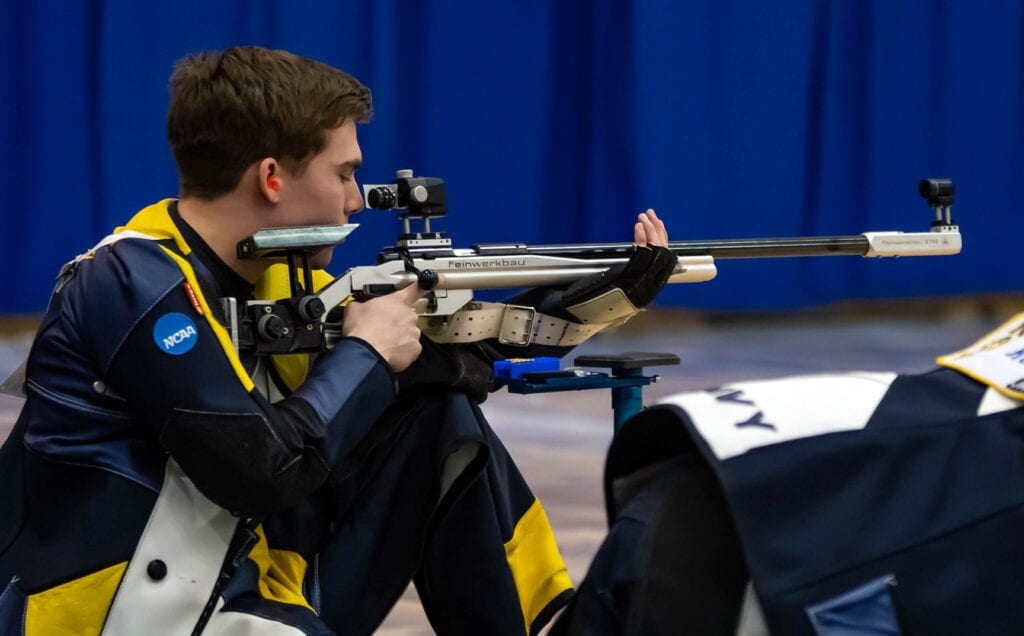
There is also some recoil you have to deal with when shooting small bore, and that can affect your shot. So you have to be able to manage that. There really isn’t any recoil to speak of when shooting the air rifle. It’s a more static event also because you’re basically in the same standing position for an hour and fifteen minutes.
Match Routine
NSN: Can you walk me through your routine the day of a match?
MZ: So, normally our matches start pretty early. I want to make sure that I am well hydrated. This is important because you don’t want to have dry eyes when you’re trying to focus in on the target.
For breakfast, I’ll have something like oatmeal because it digests slowly and keeps my energy level up. And then I’ll have a little bit of fruit. During the match, I’ll usually have a granola bar.
NSN: That makes total sense. I actually hadn’t considered how not being adequately hydrated could affect a shooter’s performance. That’s good to know.
Now, what about during a match. What does your pre-shot routine look like? And what if you’re just not feeling it or you’re just a little bit off? What are some things you can do to regain your focus?
MZ: One of the things I’ve been working on lately is relaxing my shoulders. That’s where I tend to carry a little tension. I’ll get the rifle in position and make sure my shoulders are relaxed. Then, I’ll relax the rest of my body.
From there, I shift to the target. I’ll put 100% of my focus on lining up the sights so that when they do line up line up on the target, I’m ready to take the shot.
If I feel like my concentration isn’t what it needs to be, I usually step off the line and try to refocus. Everyone has their own way of dealing with that. But if it’s really bad, I respond pretty well to Coach Anti getting on me with some phrases that have been known to work. “What the heck are you doing?” and “Pull your head out of your butt.” are pretty effective.
If You Could Change One Thing . . .
NSN: Every sport has its pluses and minuses. I imagine it’s no different with shooting. If you could change one thing, what would that be and what kind of impact do you think the change would have?
MZ: This isn’t done a lot, but we have competitions called Guts matches. Here, everyone on the line fires a shot within specific time frame. You need to keep shooting a high score each round to stay in the match. The low shooters get eliminated. You keep going until there’s just one person left.
Right now, this is just done for fun at competitions. But if they made it part of the actual match, I think it would make it more fun to watch as a sport.
Impact Beyond the Range
One of the big upsides to playing sports is how the experience can potentially benefit the athletes later in life. So I wanted to close out the interview with Mike and Kathleen to explore that a little bit.
NSN: Mike, how has being a Navy Rifle athlete helped you outside the range when you are dealing with other aspects of life at the Academy?
MZ: I think it’s had the most impact from a stress management standpoint. When I am shooting well in a match or even at practice, and I realize it, my heart rate might go up a little. There’s a little stress that comes with wanting to continue shooting at that high level.
To manage that, I go through a routine that calms me down, so I can stay consistent. Since it’s something I work on a few times a week, it definitely comes in handy if things really start coming at me in the Hall.
A Big Breakthrough
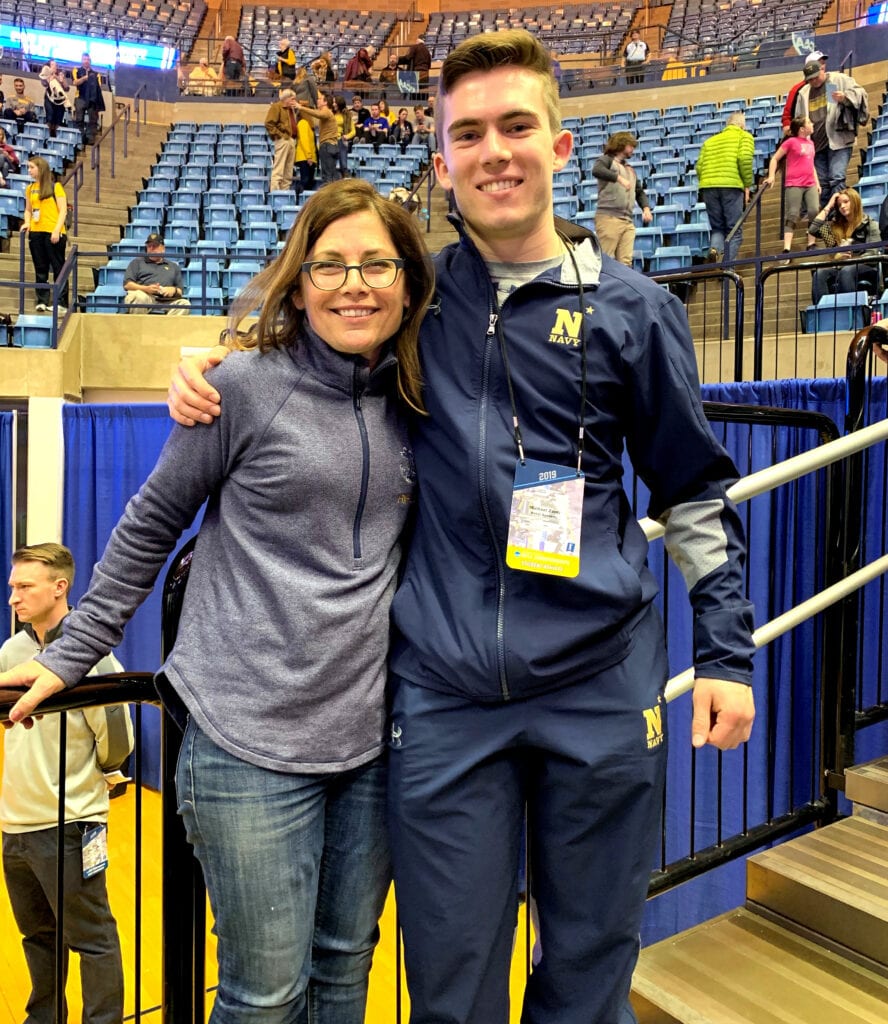
NSN: Kathleen, from your perspective, how do you think being involved with shooting has helped develop Mike as a person?
KMZ: So I’ll go back to another time where I was really proud of Mike’s performance to answer that question. It was in the match earlier in the season against N.C. State. It was a tight match and the team really needed the win.
Mike ended up shooting a perfect score in the final round of the air rifle competition to help seal the win. In the past even when he’s shot really well, his final shot of the competition has historically been a 9, not a 10.
Against N.C. State, he scored a 10, which gave him a 100 for the round. Not only was this a great finish, but it was a real breakthrough for him.
I asked him later if he was going to celebrate. And he said that he actually wanted normalize this experience and view it as something he does all the time.
What that told me is that Mike understands how to internalize excellence. And if he’s doing that on the range, that same mindset will become the norm in other aspects of his life as well.
Other Nice to Know Facts
Here are some other interesting things I learned about shooting based on my conversation with Kathleen.
Shooting is a Collaborative Sport
She shared that the culture is much different in shooting than in other sports. Competitors help each other out, especially when it comes to the equipment.
“Prior to a match, Mike broke a lace on one of his shoes,” Kathleen said. “Several competitors who weren’t shooting until later went around checking to see if the other shooters had an extra one he could use, and they eventually found one for him.”
NSN (note to readers): For those not familiar with the sport, these shoes are specifically designed for shooting. And they are critical to maintaining the athlete’s stability while competing. So not having one laced up properly can be a potential problem.
NSN: That ‘s pretty awesome. I can tell you from experience (and I’m sure other parents can back me upon this) that you just don’t see that kind of collaboration when you watch other youth sports such as basketball. So it’s pretty refreshing to see that kind of good sportsmanship displayed on a regular basis in these shooting competitions.
Medalist in the House

Navy Rifle Coach Mike Anti competed in five different Olympic Games from 1992 – 2008. He won the silver medal in the three position, 50 meter rifle event at the Athens Olympics in 2004.
Another cool fact. Coach Anti’s father Ray coached the Navy Rifle team from 1986 – 1998. And before taking the head coaching job at Navy in 2017, Mike Anti was an assistant coach at the Air Force Academy.
Great Coaching . . . Great Results
Like any other sport, great coaching plays a key role in an athlete’s development. It’s no different with shooting. Coach Anti has elevated the program since his arrival in Annapolis, and Mike’s performance this year has clearly reflected this.
In the opening match against VMI, Zanti, rung up career bests in small bore (584/600), air rifle (596/600) and aggregate score (1180/1200) to lead the Mids to the win. He’s also registered the highest aggregate score on the team in each match so far this season.
Some Final Thoughts
If you saw Mike Zanti heading back to Bancroft Hall on Stribling Walk after classes, you’d probably never guess that he’s a Navy Rifle athlete; and one of their best ones at that.
Those who’ve read my blog before know that I am a big fan of precision and accuracy. What follows are Mike Zanti’s shooting scores from the win over N.C. State earlier this year. Each discipline consists of six rounds. All of the air rifle rounds are from the standing position.
| Small Bore | Score | Air Rifle | Score |
| Kneeling 1 | 97 | A1 | 100 |
| Kneeling 2 | 97 | A2 | 100 |
| Prone 1 | 100 | A3 | 97 |
| Prone 2 | 100 | A4 | 99 |
| Standing 1 | 93 | A5 | 99 |
| Standing 2 | 96 | A6 | 100 |
| Total (SB) | 583 | Total (AR) | 595 |
| Overall Total | 1178 |
Those are some ridiculous numbers. But going back to what Kathleen said earlier, her son is at a place now where a performance like this is the expectation. Other’s may view it as extraordinary. But as far as Mike is concerned, it’s just what he does.
Until next time . . .
Thank you Navy Sports!
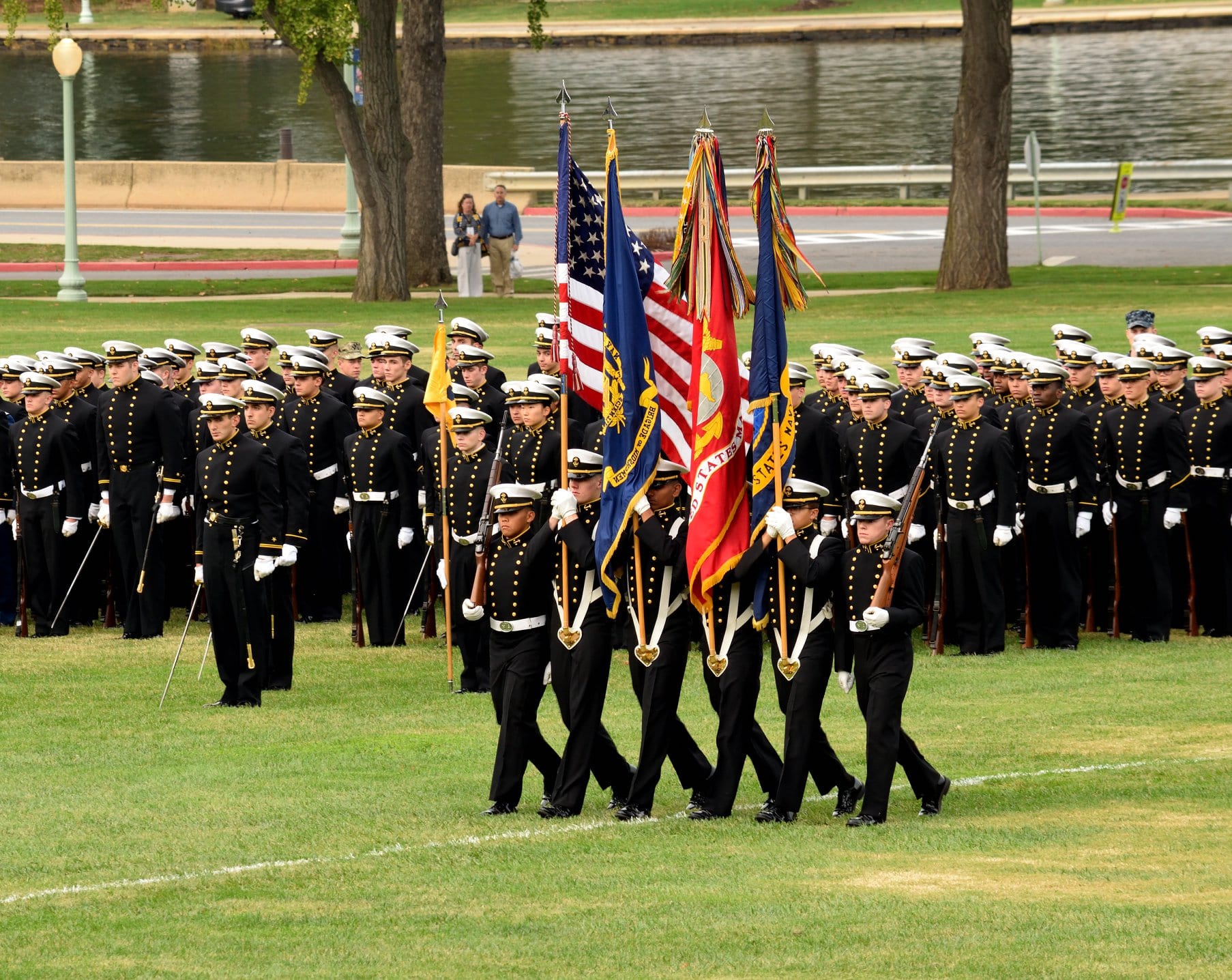
My sincere thanks to Scott Strasemeier, Senior Associate AD for Sports Information at the U.S. Naval Academy for granting permission to use images and video from the Navy Athletics media library. All photos used from this source will be properly credited in the caption. The only exception would be if the photo is used as a feature image where no caption is visible.
Follow Us
Share this story!
Related Links

Shop for Merchandise
Featured Products
As an affiliate partner, Fanatics shares a small percentage of each sale through these links with the Navy Sports Nation which will be used to maintain the website. Thanks for your support!
Did you know…
Navy and St.Mary’s are the only two rugby programs in the country that have produced two Rudy Scholz Award winners. The award for the collegiate rugby player of the year was first given out in 2016.
Connor McNerney was the Naval Academy’s first recipient in 2018. This year, Lewis Gray earned that honor. It was a fitting end to his outstanding career.
Favorite Books
Click on the images to buy these two “must have” books for all Navy football fans. As an Amazon associate, I earn from qualifying purchases.
cRA Div. 1 National Championship Highlights
Karl Darden
I am a Navy veteran and a graduate of the U.S. Naval Academy. The idea to start this blog actually came from my classmates. I hope you enjoy reading this content as much as I enjoy writing it. Go Navy!! Beat Army!!
